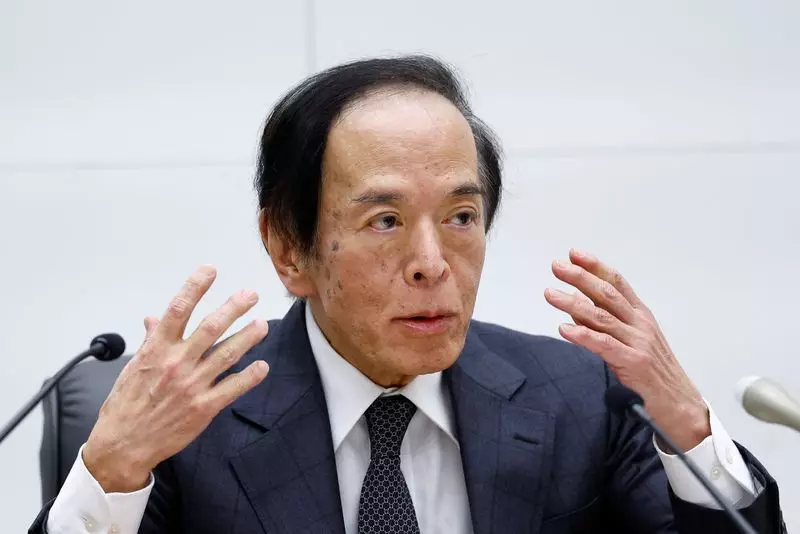The Bank of Japan (BOJ) stands on the precipice of a significant policy shift shaped by evolving economic landscapes and heightened global uncertainties. As articulated by Governor Kazuo Ueda, there is an increasing optimism regarding Japan’s ability to sustain its inflation target of 2%. According to Ueda, the coming year presents an essential juncture where factors influencing wage negotiations between companies and unions, alongside international economic policies, will play a pivotal role in shaping Japan’s monetary policy.
Historically, Japan has grappled with stagnation and deflation for an extended period, leading the BOJ to adopt aggressive monetary stimulus measures over the last decade. The central bank’s cautious optimism now hinges on various indicators suggesting a gradual improvement in the economy, particularly concerning consumption and employment. Economic recovery is vital; however, it remains fraught with external factors that could hinder progress, notably the policies of external powers like the incoming U.S. government under President-elect Donald Trump.
Ueda emphasized the critical relationship between wage negotiations and inflation. The anticipation of wage hikes is critical as higher incomes would ostensibly spurn greater consumer spending, thereby fostering an environment conducive to achieving the 2% inflation target. Ueda pointed out that the true test for the BOJ’s monetary policy would be whether wage increases are sustained and adequately transmitted across the economy.
The urgency in emphasizing wage growth arises from Japan’s unique economic landscape, characterized by a higher concentration of large corporations, the profits of which must circulate within the broader economy, benefitting smaller firms and households alike. The sustainability of Japan’s economic recovery is inextricably linked to this distribution mechanism; without it, the virtuous cycle of wage-price increases is at risk of stagnation. Ueda’s remarks reflect an understanding of the delicate balance the BOJ must maintain as it navigates these complex dynamics.
As the BOJ prepares for a potential adjustment in interest rates—projected to move from the current 0.25% to 0.5%—the central bank acknowledges the intricate web of domestic and international factors influencing the economy. The uncertainties stemming from global markets, exacerbated by political shifts such as the anticipated policy changes in the U.S., demand a vigilant and flexible approach. Ueda’s cautious stance suggests a prevalence of uncertainty, where vigilance is paramount in gauging external shocks that could disrupt Japan’s economic momentum.
The BoJ is set to release a regional economic report in the coming weeks, which will be closely monitored by investors and analysts alike. This report will provide insights into the extent of wage hikes across the country and their implications for the central bank’s inflation expectations. A broader distribution of wage increases is not merely desirable but essential for establishing a stable economic foundation that can withstand global headwinds.
As the Bank of Japan approaches a potential shift in interest rates, it faces the dual challenge of promoting sustainable economic growth while mitigating inflationary pressures. The careful balancing act involves nurturing the ongoing recovery without falling prey to overheating the economy. Ueda’s recognition that “the timing and pace of adjusting monetary accommodation will depend on developments in economic activity and prices” reflects a pragmatic approach to policy-making.
As Japan’s economic narrative unfolds, the emphasis on transparent communication regarding monetary policy intentions will be crucial in maintaining market confidence. The BOJ’s commitment to fostering a healthy economic environment—fueled by wage growth and consumer spending—remains its foremost priority.
Japan’s journey towards attaining its inflation target is a complex interplay of wages, consumption, and external influences. The BOJ’s vigilant stance and forthcoming decisions may well determine the course of the nation’s economic future, ushering in a new era characterized by stability and sustainable growth.

